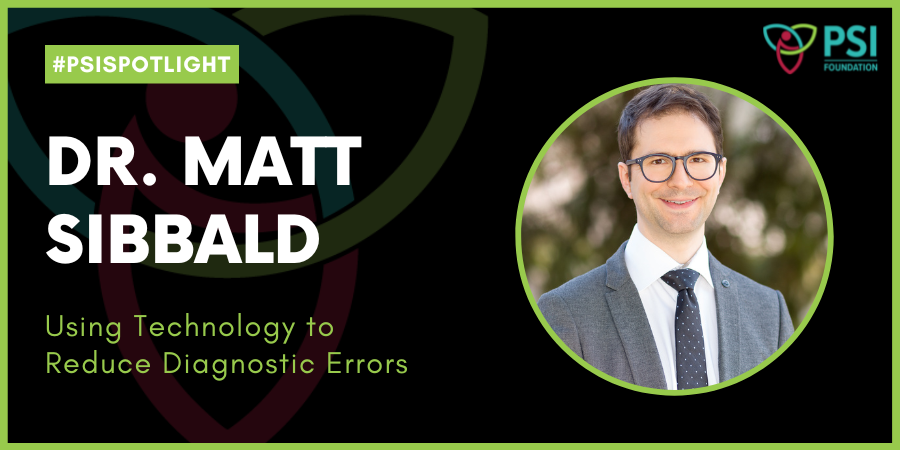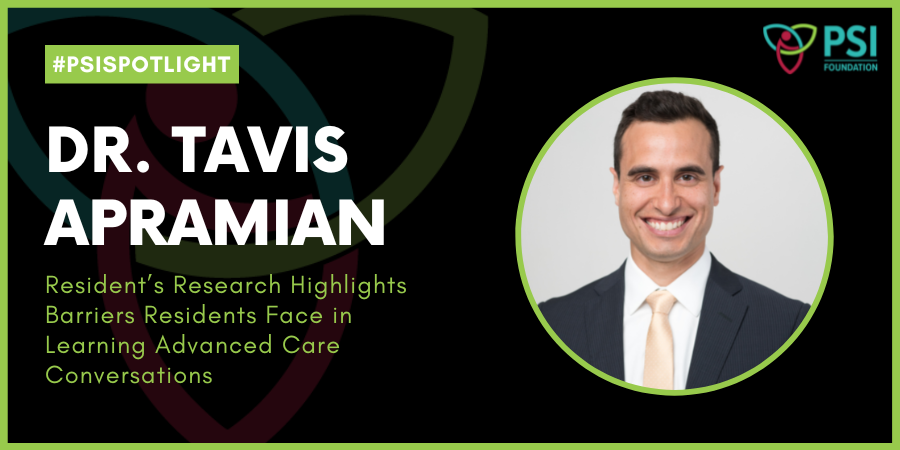A novice physician working in a busy emergency department in the middle of the night may be challenged to diagnose a patient presenting undifferentiated symptoms.
An electronic differential diagnostic (EDS) support system could assist by providing diagnostic hypotheses for the physician to consider – but only if the system is easy to use and fits into the clinician’s workflow.
Dr. Matt Sibbald, associate professor of medicine at McMaster University and cardiologist at Hamilton Health Sciences and Niagara Health System, led PSI Foundation–funded research to examine whether technology and artificial intelligence could improve diagnostic accuracy and when it should be used.
“With the challenge of busy clinical environments, technology might have something to offer to make our lives simpler as clinicians and bring more value and be more effective for patients,” says Dr. Sibbald. “Technology and artificial intelligence could leverage clinicians’ expertise and extend their cognitive capacity. But it needs to be accessible at the point of care without physicians having to modify their workflow.”
EDS support systems have been available for decades and have the potential to reduce diagnostic errors by providing a list of diagnostic hypotheses for the physician to consider. However, the value of the technology has always been limited by the amount of time that physicians needed to spend inputting data into the system – ranging from 20 minutes to even hours per patient.
A platform called Isabel may have greater potential to fit within clinicians’ workflows. After the clinician inputs the patient’s age and just a couple of key symptoms, taking only a minute or two – though Dr. Sibbald notes that this still represents a significant amount of a typical seven-minute emergency department triage visit – the system provides a list of the most common diagnosis differentials.
“It helps with quick decision-making around undifferentiated illness to make sure that you’ve at least thought about the different possibilities,” says Dr. Sibbald. “Some of these hypotheses might not be relevant to the patient in front of you, but that’s for the clinician to dismiss. A system like this is expected to diagnose, but to suggest.”
In 2020, Dr. Sibbald and his team received PSI funding to examine the Isabel EDS system under “sterile” conditions, not a working clinic, as a first step to gauge whether the system could improve the diagnostic process. Clinicians with different levels of experience completed cases through an online platform, with half using EDS early in the process, when only the main patient complaint was available, and half using EDS later, when all patient information including medical history and a physical, was available.
The research team found that the system increased the number of diagnostic hypotheses and the likelihood of the correct diagnosis being included in the list. When Isabel was used early, it generated significantly more diagnostic hypotheses, and when it was used later, the correct diagnosis was included more often in the list of hypotheses. But, ultimately, the researchers found that the system improved the diagnostic process regardless of when it was used and who was using it, though novices benefited the most.
“Electronic differential diagnosis does contribute to physician diagnosis. It adds rigor and length to the differential, and it adds different things for a physician to consider,” says Dr. Sibbald. “We actually saw the most benefit with simplest diagnoses for relatively novice clinicians. We expected that the system would be most helpful with the complex cases, but it helps by pointing to things that you know but haven’t necessarily thought of in the moment.”
Following these positive results, published in BMJ Quality and Safety, Dr. Sibbald and his team have continued to examine how EDS could be used in real-life clinical settings where physicians see patients with undifferentiated illness, such as primary care and the emergency department. They recently published a follow-up study that examined EDS in the context of the emergency room, with a research associate using the technology to simulate how the system could be integrated into the workflow. The results of this study, published in JMIR Human Factors, suggested that the technology needs to be customized to account for the scope and context of the emergency department and the clinician’s experience.
Though there is still a lot of work to be done before EDS is routinely used in clinical settings, Dr. Sibbald says that the potential value of these systems in reducing diagnostic errors is worth the effort. And funding from PSI has been key to the work they have done so far.
“It’s important for PSI to have a broad mandate and scope and to support this type of research that might not be top of mind on the needs spectrum but is still vital for our health care system to grow and adapt,” says Dr. Sibbald. “We can’t keep doing things the same way we’ve been doing them. There’s so much to challenge and to change, and this field can be a key part of that change management. But it needs to be driven by scholarship, research and understanding.”



